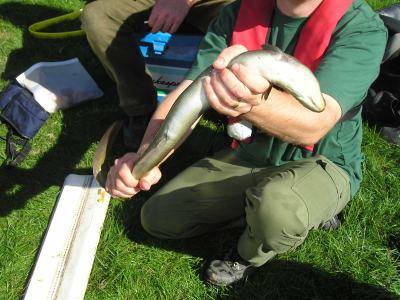A recent Environment Agency survey on eels will give hope to conservationists and anglers that conditions in Sussex rivers are improving.
Eels across Europe are facing many pressures. In Sussex there are only 10 to 20 per cent the numbers of eels there were before 2001. The spread of disease, loss of habitat and manmade obstructions that stop eel migration have all caused problems for eels in Sussex. Eels are also at risk from pollutants such as mercury, pesticides and polychlorinated biphenyls (PCBs) that can potentially damage the eel’s ability to migrate and successfully spawn.
In previous studies, accumulation of these toxic contaminants have been found in the tissue of eels. But now the Environment Agency’s Ecological Appraisal team in Sussex has carried out studies that show, in the last ten years, levels of toxic contaminants have now halved in eels living in rivers in Sussex.
Dr John Foster, an ecologist working for The Environment Agency’s Sussex Area Ecological Appraisal Team said: “This is great news for our eels in Sussex. It shows that levels of these environmentally damaging substances are decreasing in our aquatic environment. The reduction of toxic contaminants in eels is a direct result of a ban on the use of PCBs and chlorinated organic pesticides. This not only benefits eels but also those animals that rely on them for food, like otters and heron and shows a real example of environmental improvement in Sussex.”
Many of these toxic chemicals were banned in the 1980’s. This study has demonstrated that, although these compounds can persist in the environment for years, with strong environmental regulation, it is possible to reduce levels of contamination over time.
Dr John Foster continued: “Despite this huge improvement, Sussex eel stocks are still under great threat and there are still many pressures that could affect the future of eels. Unfortunately we have very limited resources to spend on eel work but where we can we will continue to take action to protect them. We hope to be able to do more in the future to help increase the number of eels in our rivers and the other species that depend on them.”









